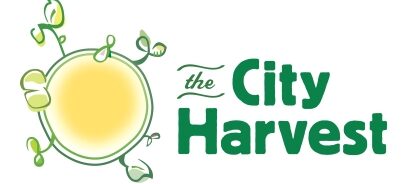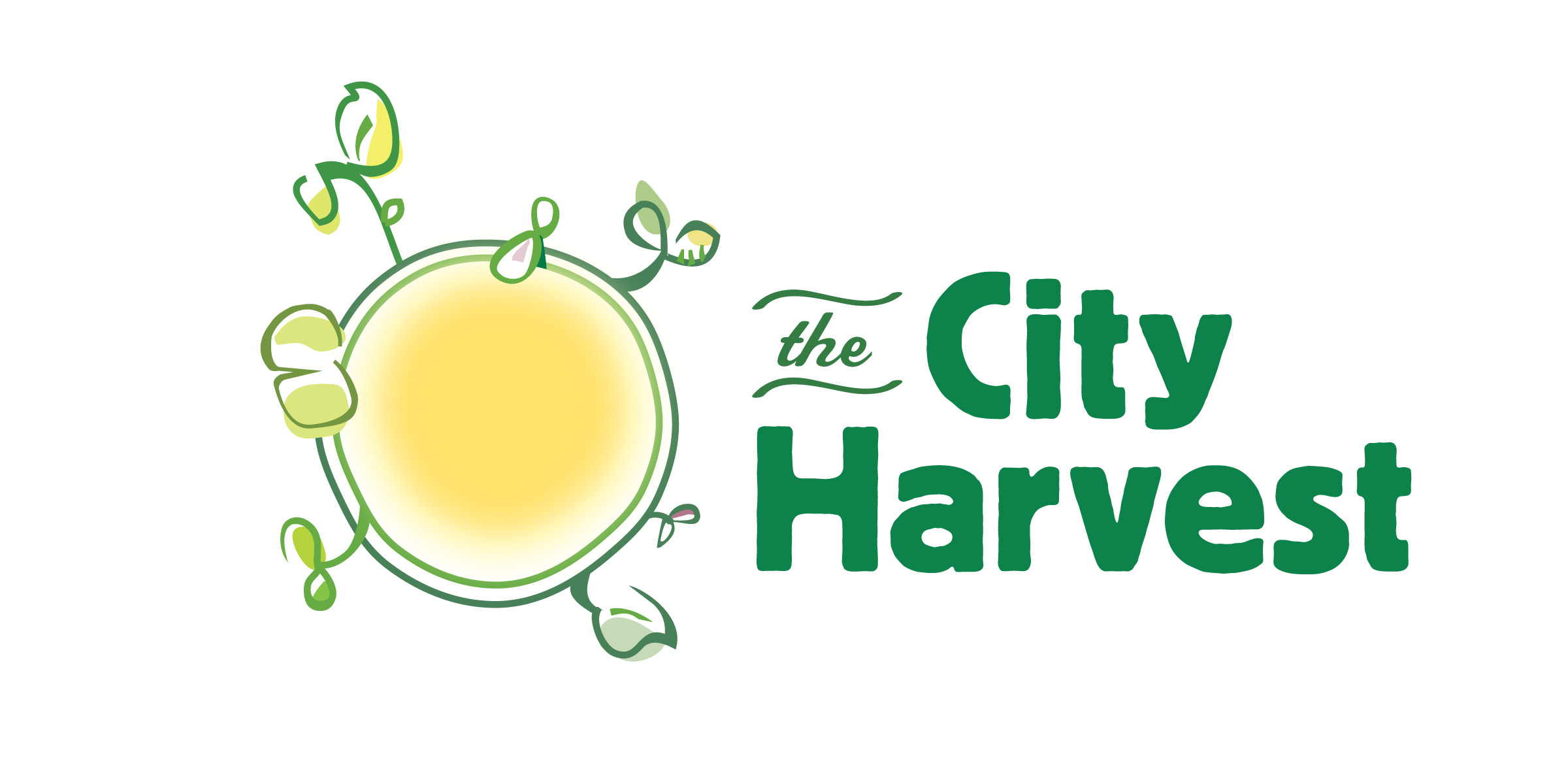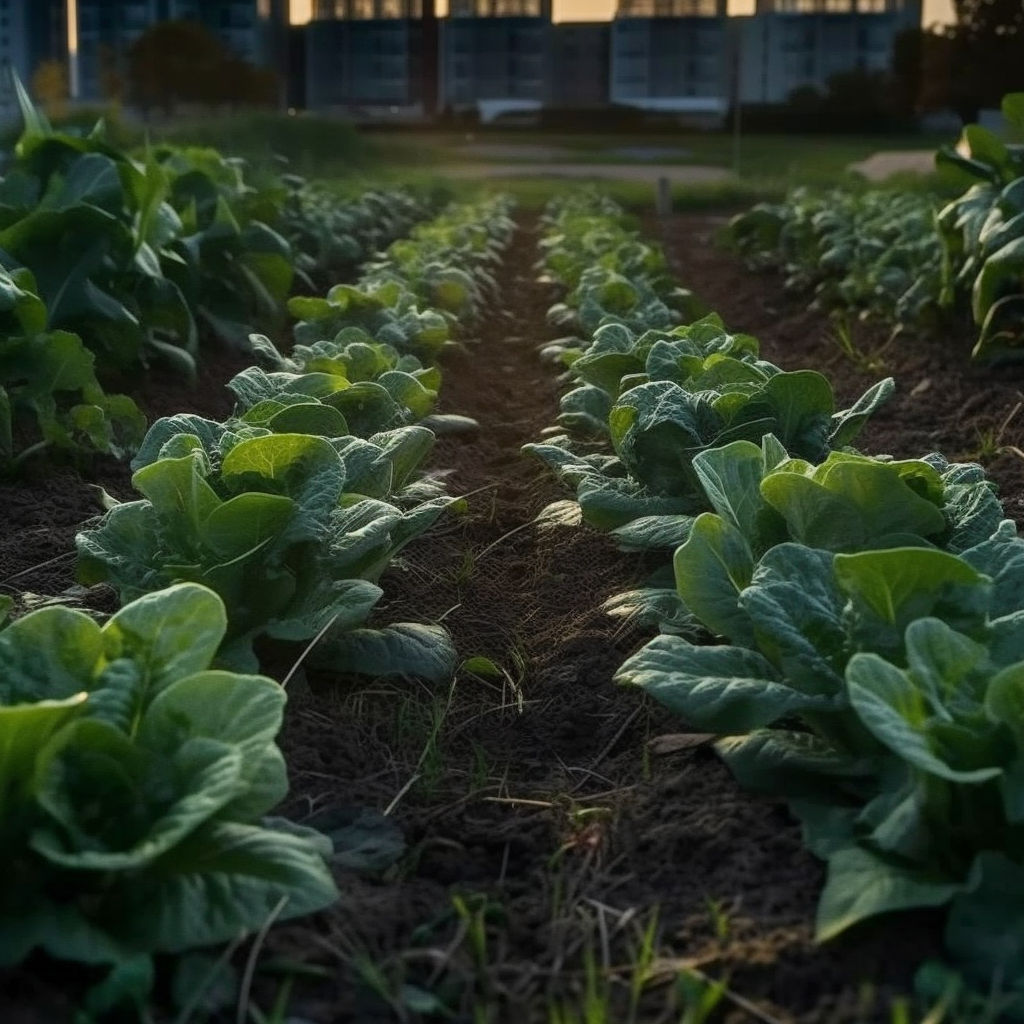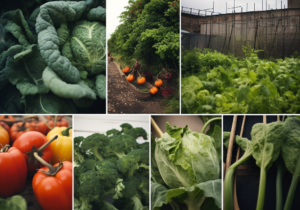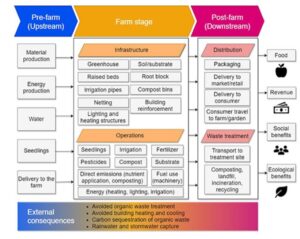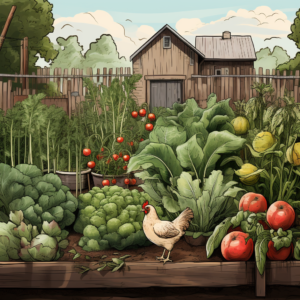What is Urban Farming and Why is it Important?
Urban farming, or urban agriculture as it is known in certain circles, refers to the cultivation, processing, and distribution of food in and around urban areas. It encompasses a wide spectrum of activities such as the growing of plants and the raising of animals within city boundaries. These ventures can extend from backyard gardens to community gardens, large-scale cooperatives efforts, or even innovative skyscraper greenhouses.
The essence of this practice lies in its ability to use urban landscapes for food production – a concept that has become increasingly significant as we grapple with issues of food security. The advents of local agriculture have proven their worth across several spectrums.
Not only does it provide fresh produce right at our doorsteps but also simultaneously reduces our carbon footprint by limiting transport emissions. Moreover, it also brings people closer to nature in the bustling urban jungles where concrete often overshadows greenery.
But why is ‘growing your own food’ gaining such momentum? One reason could be rising awareness about soil health and organic agriculture.
Urban farming offers an opportunity for city dwellers to grow their own organic produce without relying on market-bought fruits and vegetables that are often subject to chemical fertilizers and pesticides. Furthermore, these farms act as havens for biodiversity by attracting pollinators like butterflies and bees which play a crucial role in maintaining ecosystems.
Urban farming’s importance extends beyond mere individual benefits into the realm of communities. Community gardens have become rallying points where neighbors come together to cultivate crops while cultivating relationships too!
They serve not just as physical spaces for growing fruits and vegetables but also social spaces fostering interaction among people who might otherwise never cross paths. Thus, urban farming intertwines multiple threads – environmental sustainability through reduced emissions, improved soil health via organic practices; nutritional health due to fresh produce consumption; enhancement of biodiversity; strengthening social ties through community gardening initiatives – all leading toward sustainable cities nurturing healthier citizens.
Defining Urban Farming in Various Contexts
Amid the steel and glass facades of modern cityscapes, an ancient practice is rapidly gaining popularity. Known as urban farming, it is a movement that pushes for the cultivation, processing, and distribution of food in or around an urban area.
In its simplest form, urban farming can be described as growing your own food within an urban environment. However, this definition does not do justice to the myriad nuances involved in its practice across varying contexts.
In developed nations like the United States or countries in Western Europe, urban farming often takes shape through local agriculture initiatives such as community gardens and backyard gardens. Here, spaces previously dismissed as barren or unusable are transformed into vibrant patches of greenery that promote not only soil health but also fortify community bonds.
These green spaces become sources of local fresh produce and act as educational hubs where individuals learn about organic agriculture practices. On the other hand, in developing economies where rapid industrialization often sidelines sustainable practices, urban farming becomes a necessity rather than a choice.
It is seen not just as a way to enhance local food production but also to alleviate food insecurity issues that plague these regions. Often these farms incorporate traditional farming methods tailored to accommodate space constraints and other environmental challenges.
However varied in form and function across different regions worldwide might be – whether it’s rooftop gardens dotting New York City’s skyline or vertical farms sprouting in Singapore’s residential blocks – all stand testament to the same core principle: enhancing sustainability through localized agriculture practices against the backdrop of rapid urbanization. No matter what form it takes though – rooftop gardens dotting New York City’s skyline or vertical farms sprouting up amongst Singapore’s towering residential blocks – they all share one common goal: enhancing sustainability through localized agriculture practices amidst rapid global urbanization.
Urban agricultural endeavors contribute infinitely more than just fresh produce; they invigorate communities by encouraging participation and collaboration among residents while fostering an understanding of nature’s cycles in an urban environment often detached from such pleasures. They promote organic agriculture and sustainable practices, emphasizing the need to preserve soil health while providing a practical means for city dwellers to grow their own food.
As we move forward, it’s crucial to remember that defining urban farming is not confined merely to sowing and reaping in an urban setting. It is as much about food production as it is about creating a sense of community, promoting health and sustainability, and transforming our concrete jungles into thriving green spaces that bring us closer to nature while addressing various socio-economic issues.
A Historical Dive into Urban Farming
The roots of urban farming trace back to ancient civilizations where the concept of organic agriculture was a survival strategy rather than a contemporary trend. The hanging gardens of Babylon, one of the seven wonders of the ancient world, is perhaps an early testament to humanity’s inclination towards urban farming.
As populations flocked towards cities in search for prosperity and security, the necessity to cultivate food within city limits became evident. This rudimentary version of urban agriculture was instrumental in sustaining growing populations that might have otherwise succumbed to food scarcity.
In more recent times, during World War II, the Victory Gardens initiative resurfaced urban farming in America. Homeowners were encouraged to ‘grow your own food’ as part of patriotic duty to supplement rationed supplies.
These Backyard Gardens not only provided sustenance but also served as morale boosters during hard times. Thus, while initially born out of necessity, these community gardens started evolving into spaces for leisure and bonding.
Moving forward into the late 20th century, as environmental concerns grew and awareness about food production processes increased, there was a notable shift back towards local agriculture initiatives. City dwellers began converting vacant lots into productive land and rooftops into high-rise farms.
Community Gardens experienced a resurgence as people yearned for chemical-free produce grown close to home. This shift also had much to do with improving soil health – an aspect often compromised with extensive industrial farming practices.
As we delve into the 21st century’s rising concerns about global warming and sustainability echo louder than ever before – making urban farming not just desirable but urgent for our collective future survival. As industrialized food production systems contribute significantly towards carbon emissions while degrading precious top soil health – returning control over food production back into people’s hands through community gardens is becoming increasingly significant; proving that our historical dive has important lessons for shaping a sustainable future.
Global Urban Farming Initiatives
Cognizant of the increasing global population and the mounting strain on food production, various nations have started to incorporate urban farming in their landscape through globally recognized initiatives. This shift has been a beacon for sustainable development, fostering organic agriculture while promoting local food supply chains via backyard gardens and community farms. One remarkable example is Havana, Cuba.
In response to economic turmoil and food shortages in the 1990s, Cubans established organopónicos or urban organic farms. These large-scale operations aimed at cultivating fresh produce right in the heart of their cities.
The concept of ‘grow your own food’ took root and proliferated across the island nation, significantly boosting local agriculture. Across continents, a similar wave swept through Detroit in North America where vacant lots were converted into fertile lands teeming with vegetables and fruits such as apple trees and raspberries.
In an area that had once been characterized by desolation following economic decline, urban farming emerged as a sign of hope – breathing life back into abandoned areas while also improving soil health and restoring ecosystems. Tokyo’s Soradofarms provide a snapshot into Asia’s contribution to this worldwide movement.
Nestled amidst bustling skyscrapers on top of train stations, these rooftop gardens offer rented plots where city dwellers can experience the joy of growing their own herbs or vegetables. Concurrently in Africa, specifically Kenya’s capital Nairobi, community gardens have sprouted across informal settlements aiming to combat malnutrition by empowering residents with knowledge on sustainable farming methods.
Elsewhere in Europe – particularly France – legislation has dictated that all new commercial buildings must incorporate green roofs partly dedicated to food production. This initiative not only fosters biodiversity but also helps to manage stormwater runoff while providing cooling effects thus reducing energy consumption.
In essence these global initiatives underscore that urban farming holds immense potential for addressing some critical concerns – including issues related to food security caused by rapid urbanization-ridden loss of farmland; it pushes us to rethink our cities and reshape them into spaces that integrate food production, improving not only our environment but also our socio-economic fabric. These urban farming initiatives around the world exemplify how local agriculture can provide a sustainable alternative food source, nurture soil health, and foster community spirit.
Challenges Confronting Urban Farmers
The urban farming movement, while burgeoning with potential advantages to our cities, has its own set of intricate challenges. The dearth of suitable land in cityscapes is the first hurdle in the path of local agriculture.
Farmers who have set out to grow their own food are continually grappling with the task of finding ample space. As cities expand and populations increase, available open spaces are being rapidly consumed by residential and commercial development.
In addition to space constraints, Backyard Gardens can run into problems related to soil health. Contaminated soil is a recurring issue in urban areas due to decades of industrial waste disposal and air pollution from vehicular emissions.
It is not uncommon for urban soils to harbor heavy metals like lead or arsenic which can make their way into food crops, posing severe health risks. Reconditioning these soils requires considerable effort and resources.
Furthermore, an overarching challenge that faces both community gardens and individual growers alike is the lack of adequate knowledge related to organic agriculture among urban dwellers. Without sufficient understanding about planting seasons, crop rotation, pest management and other aspects vital for growing healthy plants, novice farmers might fail even before they begin harvesting.
Moreover, establishing an effective system for water management poses another challenge for community gardens focused on food production in urban areas. While some regions grapple with excess rainfall leading to waterlogged conditions that threaten crops’ survival; others contend with scarcity which subjects plants to drought-like conditions.
In spite of these obstacles though, the palpable enthusiasm surrounding Urban Farming remains undeterred as city dwellers continue embracing this reconnection with nature within concrete jungles. The phenomenon continues its steady march forward fueled by a collective desire among city inhabitants for more sustainable lifestyles integrated with nature through local food production systems like Community Gardens.
Multifaceted Benefits of Urban Farming
Urban farming, in all its diverse forms – including community gardens and backyard gardens, is not merely a trend for the eco-conscious city dwellers or an aesthetic enhancement of urban spaces, it also provides a myriad of benefits hitherto unexplored by mainstream discourse. These advantages are multifaceted, encompassing social, economic, environmental and health aspects that reverberate not only through the immediate households involved but also throughout entire communities.
The concept of growing your own food introduces a profound sense of connection to what we consume. This heightened awareness fosters healthier eating habits by promoting fresh produce over processed foods.
The quality and freshness of these homegrown crops often surpass that of commercially available produce. Moreover, soil health becomes paramount to those participating in local agriculture initiatives such as community or backyard gardens.
By managing their own compost or utilizing organic fertilizers free from harmful chemicals, urban farmers can augment the nutrient content in their soil which translates into more nutritious crops. From an economic perspective, urban farming can offer considerable savings for households who grow enough produce to offset their grocery bills.
Raising your own crops reduces dependence on commercial food production systems – systems often charged with being unsustainable due to their heavy reliance on transportation and resultant carbon footprint. Furthermore, surplus output from these household farms can serve as an additional income source if sold within local networks thereby stimulating local economies.
Environmental benefits are manifold too; the plant life inherent in community gardens contributes to air purification by absorbing carbon dioxide and releasing oxygen into the atmosphere thereby mitigating climate change effects at a grassroots level. Urban farming also supports biodiversity by providing habitats for numerous species which would otherwise struggle in concrete-dominated city landscapes.
Additionally, well-managed organic agriculture practices improve soil quality over time enhancing its fertility and preventing erosion. In essence, whether we look at it from a health perspective – encouraging diet rich in fresh fruits and vegetables; a financial vantage point – reducing grocery bills while potentially providing additional income; or an environmental angle – promoting biodiversity, reducing carbon footprint, and aiding in climate change mitigation; urban farming is a multifaceted boon that holds the potential to reshape our cities and our lives for the better.
The Future of Urban Farming
As civilizations burgeon and cityscapes continue to expand, the future of urban farming seems poised to shine more luminously than ever before. The escalating necessity for local agriculture, combined with public awareness about the benefits of organic agriculture, is driving an evolution in the ways we grow, distribute and consume our food. Innovations are emerging that effectively demonstrate how urban farming can be expanded from backyard gardens into large-scale operations while maintaining crucial principles such as soil health and sustainability.
With a growing inclination towards embracing sustainable living practices worldwide, ‘grow your own food’ has moved beyond being just a hobbyist’s mantra to an outright global movement. This trend is paving the way for technologically advanced solutions in urban farming that promise higher yields without compromising on environmental balance or quality of produce.
These advances will allow city dwellers not only to grow their own food but also contribute significantly to local food production. The rise of community gardens has also played an essential role in shaping the future of urban farming.
These gardens utilize shared spaces within cities, transforming them into lush green havens where people come together not just to cultivate crops but also learn about sustainable agricultural practices. They are perhaps one of the most visible symbols of urban farming’s potential: they highlight how even densely populated areas can contribute fruitfully to addressing the world’s ever-growing demand for fresh produce.
It is projected that urban farms will increasingly become integrated with other aspects of city infrastructure. Rooftop farms on commercial buildings, vertical farms beside residential complexes, and greenhouse tunnels beneath parks – these are just a few ways through which cities might harmoniously blend this ancient practice into their modern frameworks.
These transformations will create opportunities for fresh produce grown right at citizens’ doorsteps – fostering healthier communities while reducing carbon footprints associated with long-distance transportation of goods. It appears as though we stand on the precipice of a greener future where urban agriculture thrives amidst concrete jungles.
This new age of agriculture will not only transform our cities and diets but also our relationships with the natural world. is not just about food production; it’s about fostering community, promoting health, and preserving our planet – a testament to mankind’s capacity for innovation and resilience in the face of adversity.
Conclusion
As we collectively stand on the precipice of the future, it becomes increasingly clear that urban farming holds immense potential for transforming our approach to food production, building sustainable cities, and fostering social cohesion. This innovative practice has already begun its journey from the fringes to the mainstream, and it is poised to redefine our understanding of agriculture in the densely populated regions of our globe. Backyard gardens are not just patches of verdant tranquility amidst concrete jungles; they are powerful symbols of self-reliance and sustainability.
Every rooftop vegetable patch or balcony herb garden is a testament to humanity’s resilience and creativity, a silent challenge against the industrial food complex that often prioritizes efficiency over quality. By choosing to grow your own food within city limits, individuals send an impactful message about embracing healthier lifestyles while reducing their carbon footprints.
Community gardens offer broader implications for urban revitalization and social cohesion. They transform underutilized urban spaces into vibrant hubs where residents come together not only to cultivate plants but also relationships.
These green oases within sprawling metropolises promote organic agriculture practices while offering opportunities for community education on nutrition and environmental conservation. Moreover, they contribute positively to soil health by turning waste materials into compost and reducing pollution levels.
From promoting local agriculture to encouraging healthier eating habits, urban farming offers us several pathways toward creating greener cities with stronger communities. It may be fraught with challenges – from regulatory hurdles to resource constraints – but its benefits far outweigh these obstacles.
As long as we continue nurturing this movement with supportive policy frameworks and widespread public participation, urban farming will undoubtedly play a pivotal role in shaping sustainable futures. As daunting as our global food security challenges may seem today, solutions could be sprouting right at home in our backyards or community gardens.
Urban farming represents an optimistic vision where fresh produce is not an imported luxury but a local amenity – one that contributes positively toward individual health, community engagement, environmental sustainability, and local economies. This burgeoning movement is more than just a trend – it represents a fundamental shift in how we perceive and interact with the world around us, offering fertile ground for innovation and growth.
Sources:
